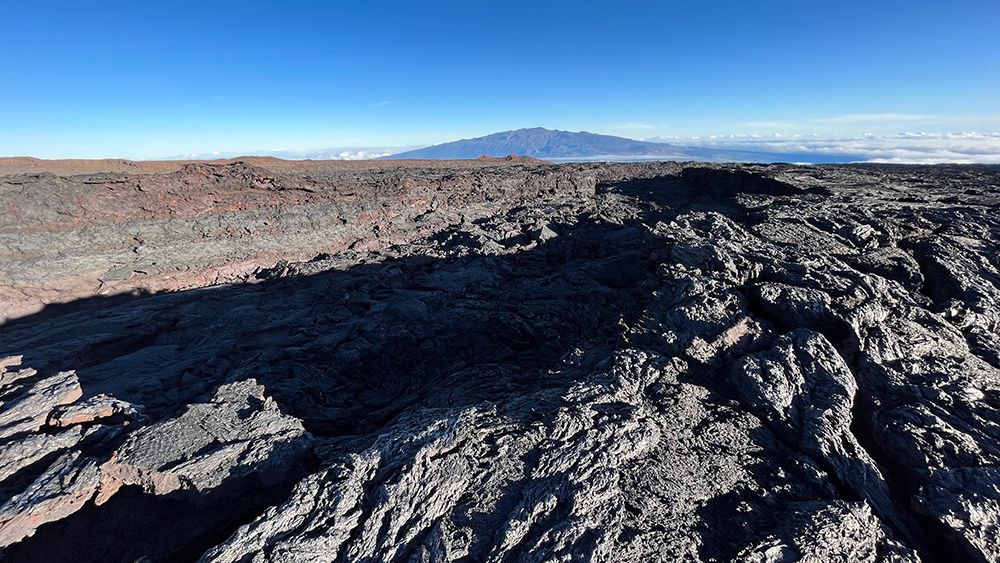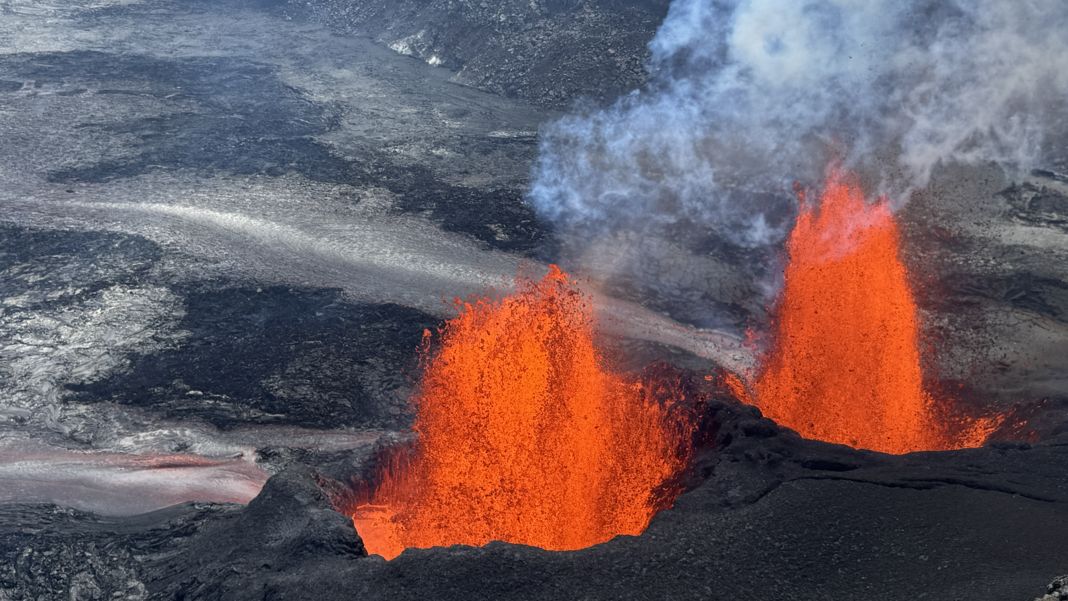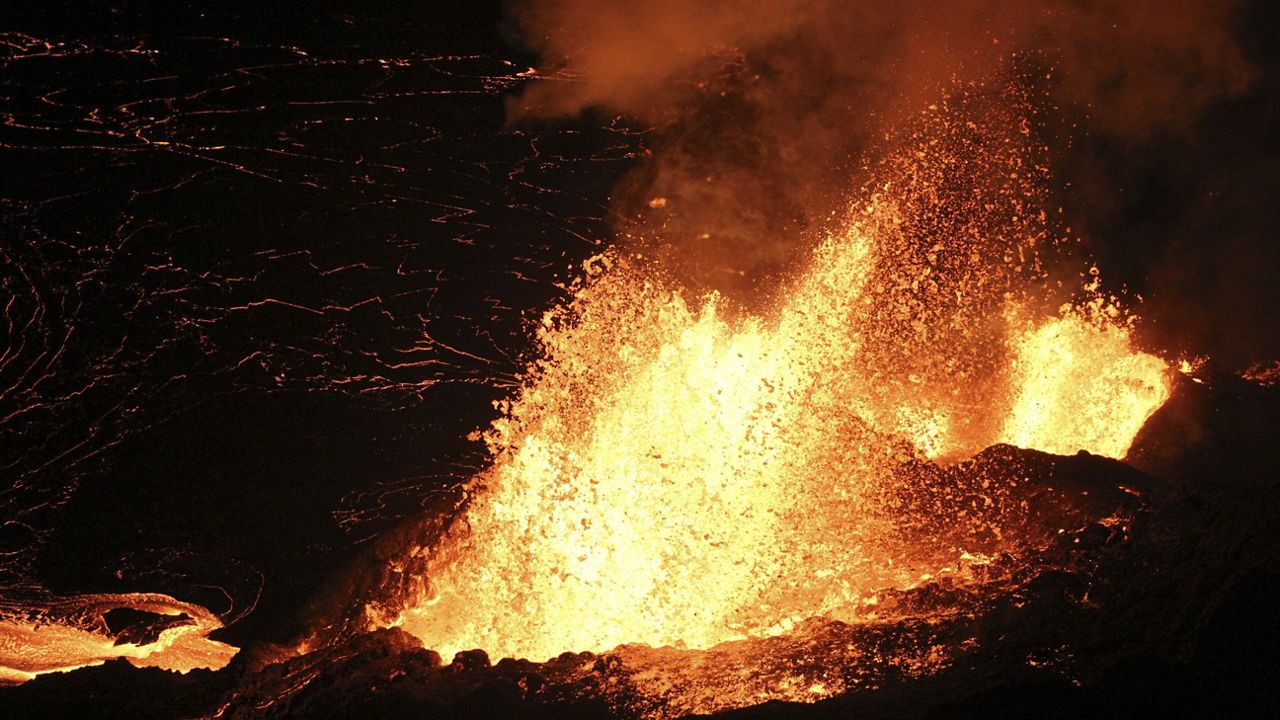HAWAII VOLCANOES NATIONAL PARK, Hawaii — Kilauea and Mauna Loa are no longer erupting, according to the USGS Hawaiian Volcano Observatory’s daily report.
“Welcome to what is hopefully the last one of these organized press conferences,” said Ken Hon, scientist-in-charge at the Hawaiian Volcano Observatory, starting off the Tuesday briefing. “Straight to the big news this morning. We lowered the alert levels … indicating that we think this eruption is paused. And it’s paused, probably permanently.”
“But generally we have a little bit of a cooling off period before we consider an eruption over,” he added. “And statistically, that’s about a three-month period.”
The volcano alert level for ground-based hazards has been lowered from “watch” to “advisory,” and the aviation color code from orange to yellow.
Hon said as of Dec. 10, lava in the channels had begun to drain out and no new lava was seen entering. There’s still “points of glow” in the channel and around the cone, particularly on the backside of the cone. He noted the lessened seismic activity that shows that “the mountain is depressurized, and also volcanic tremor that’s caused by gas being released in the vent has gone to almost nothing.”
There is still steady inflation of Mauna Loa, which means magma is entering the magma chamber, but it’s depressurized, unlike before when magma was entering the chamber and pushing on the rocks and causing earthquakes, according to Hon. He estimates somewhere between 200 and 250 million cubic meters of lava erupted during the 12-day eruption phase, a fifth of the amount of lava that erupted in 2018.
Hon added it was a big eruption, “a little bit larger than the average size Mauna Loa eruption, which is somewhere between 150 and 200 million cubic meters of lava.” He said one point of interest about the eruption was that it’s been the longest resting period, 38 years, of any historic Mauna Loa eruption.
According to Talmadge Magno of the County of Hawaii Civil Defense, the Traffic Hazard Mitigation Route is currently open until midnight on Tuesday, will be open from 4 p.m. to midnight on Wednesday and Thursday, then will permanently close as of midnight on Thursday.
Magno said the Gilbert Kahele Recreation Area will remain open 24/7 and people can go there to see Mauna Loa and use the facilities. Hawaii Police Department will maintain a presence in the area as needed.
In addition, the Department of Land and Natural Resources Division of Forestry and Wildlife has reopened the Kapapala Forest Reserve; Ainapo Trail, road and cabin; and the Kipuka Ainahou Nene Sanctuary, according to a news release.
Mauna Loa Forest Reserve and the Mauna Loa Observatory Road will remain closed because of continued volcanic hazards, and a locked gate will be constructed on the access road at the Mauna Loa Forest Reserve boundary.
The Kapapala Unit J reopened for game bird hunting last Saturday, but the portion of Unit A south of the Daniel K. Inouye Highway within the Mauna Kea Forest Reserve and Game Management Area will remain closed for hunting.
The DLNR reminds the public that the summit and National Park Service areas on Mauna Loa remain closed. Individuals crossing into closed areas may be cited or arrested.
HVO will continue to monitor Kilauea and Mauna Loa for signs of renewed activity.
“It was a beautiful eruption,” said Hon. “Lots of people got to see it and it didn’t take out any major infrastructure. And most importantly, it didn’t affect anybody’s life.”
Sarah Yamanaka covers events, environmental and community news for Spectrum News Hawaii. She can be reached at sarah.yamanaka@charter.com.








